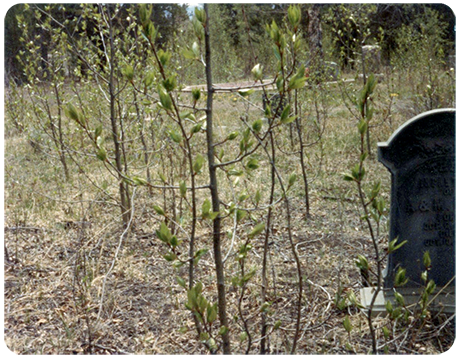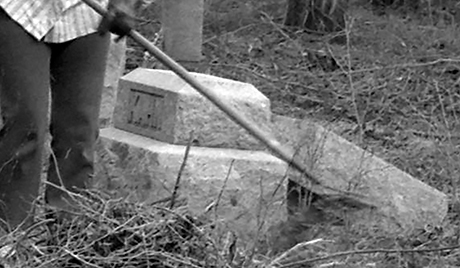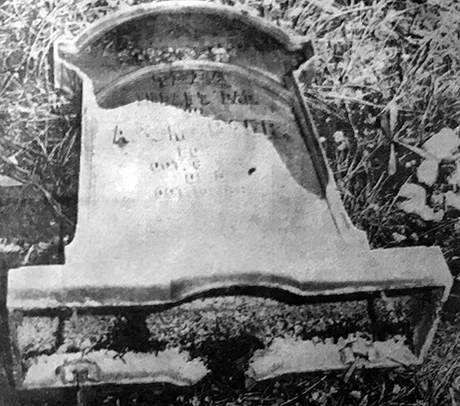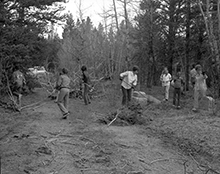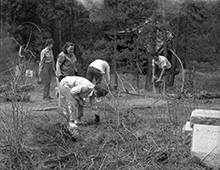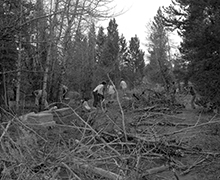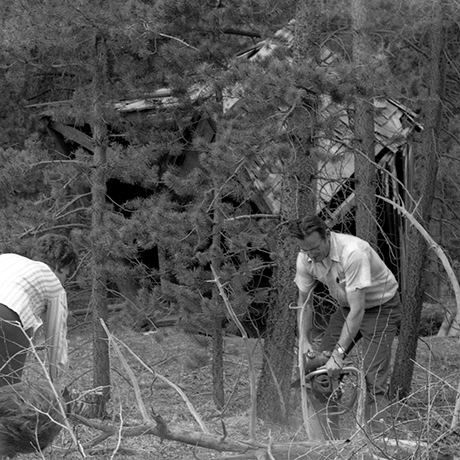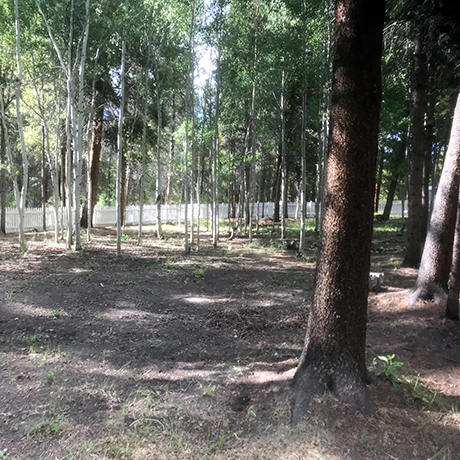Every year since 1996, the Temple Israel Foundation and members of the Denver chapter of B’nai B’rith have held a cleanup of the Hebrew Cemetery in Leadville. The Hebrew Cemetery was established in 1880, about the same time as the broader Evergreen Cemetery, but fell into various states of disrepair and forest overgrowth from neglect through most of the Twentieth Century. While few photos are available of the initial restoration efforts in the early 1990s to the start of the annual cleanup events, we have uncovered several activities that took place during the general “neglect” period of the Twentieth Century.
Several burials in the Hebrew Cemetery took place well after the boom and bust age of Leadville and well into the Twentieth Century. These include several burials of the old Leadville Jews between the 1920s and the 1950s, and the last burial in 1981 with Minette Miller. No known burials would happen until the new Millennium.
A newspaper report in The Herald Democrat on September 4 of 1970 stated that in August prior the cemetery suffered several acts of vandalism in which many headstones and monuments were overturned. Reports from the Intermountain Jewish News branded this incident as an act of anti-Semitism. However, no anti-Semitic symbolism or graffiti were ever found among the vandalism. Historically, Leadville has had a long history of general tolerance not just for Jews but also for the many cultures of people who lived in Leadville, short of isolated incidents by individuals. This vandalism appears more indicative of a “teenage kegger” gone wild rather than an act of bigotry.
From the Lake County Public Library, employees found among a donation given in June of 2018 some documentation and photographs of a cleanup at the Hebrew Cemetery that occurred on May 28, 1972. The overall donation included copies of The Herald Democrat, the Leadville newspaper that is still in publication, along with a wealth of photographic negatives ranging from the 1890s to the 1990s. As researchers from Temple Israel sifted through the files, that is when they discovered the 1972 cleanup. That was almost two years after the reported act of vandalism and almost twenty-four years before the Temple Israel Foundation made the cemetery cleanup an annual event. The Herald Democrat article described these workers as “volunteers”, however there is no reference to an organization to with these volunteers were associated. The article did suggest that these people may have rotated around the Evergreen Cemetery as part of an annual activity and choosing a different section each year to clean. Apparently, they chose the Hebrew Cemetery In 1972.
Among some of the more interesting features of these photos is the reclamation of the cemetery by the forest, and with what appears as a tool shed or perhaps a caretaker’s cabin. However, in asking the director William Korn of the Temple Israel Foundation about the small cabin, he said that he had no recollection of any evidence of the cabin or its remains when the Foundation acquired the property and began the restoration efforts in 1993. This suggests, along with the dilapidated appearance of the structure in the photos, that someone obviously tore down the structure sometime in the 1970s or 1980s.
Restoration of the Hebrew Cemetery, which began once the land was acquired in 1993, demanded years of intensive labor and loving care. It was a daunting task to say the least! The surrounding forest had almost completely swallowed the cemetery. The first two or three annual B’nai B’rith clean-up weekends were the most challenging. Those early volunteers spent hours clearing the overbrush and the underbrush and the general clearing of the cemetery grounds. The Quiet Title action determined the modern borders of the cemetery and allowed for determining where to put a new fence and where to establish the entrance and install a new arch. Physical evidence showed that a small wood picket fence did exist on the property.
Since the primary efforts focused solely on physical work, documentation and records pertaining to the cemetery took a necessary back seat. However, the importance and need of the documentation was not neglected. Once the general cleanup was done, research could start. The broader Evergreen Cemetery had records that were organized and made publicly available by Nancy Manly. Through her research and final report, that gave a good idea of who was buried in the Hebrew Cemetery, as well as the entire Evergreen Cemetery. However, not all of the grave markers remained from their original placement. As with the Evergreen Cemetery, a variety of grave markers were in place. The most affordable ones were wood, but they were prone to wear and rotting. Most markers were some sort of stone, like granite or marble, while some were metal. A few stone markers were very soft and eroded away. In reconciling the records with the physical cemetery, it became obvious that the locations were almost like suggestions more than exact burial plots. Between that and the missing markers, it made some grave plots completely unknown and lost to us. However, with the records we did have and the grave locations determined for most of the plots, we then replaced the missing grave markers with etched bricks surrounded with concrete and made sure the existing grave markers were in stable condition. The cemetery was reconsecrated in 1999.
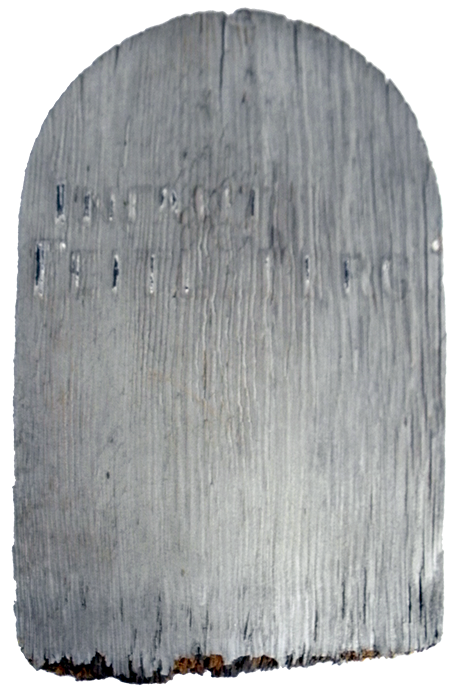
Original wood marker for “Infant Feitleberg” found in the Hebrew Cemetery. While one might think the wood marker was made with raised lettering, this is actually the result of weathering. The raw wood weathered away faster than the wood behind the painted lettering leaving it appearing as raised when in fact it was completely flat when new.
Photo by RG de Stolfe
Part of the restoration plan was to open the cemetery for new burials, mainly in a new section. This involved digging and refilling a long trench of earth along the east fence to make sure there were no existing graves that were hidden. The new Block E was ready for interments in 2001, and the first one came in late 2001. The new Millennium focused on maintaining the cemetery since the heavy restoration work was long done. The annual cleanup weekend takes place in late June and has become a signature event of the Temple Israel Foundation. The weekend features a Shabbat service on Saturday with the cleanup and a picnic on Sunday. All are welcome to help with this mitzvah!
The Temple Israel Foundation seeks your assistance in acquiring further documentation and records for the historic Hebrew Cemetery. If you have any information — photographs are also encouraged — documenting the cemetery through the 20th century and restoration efforts in the 1990s, please contact us!

